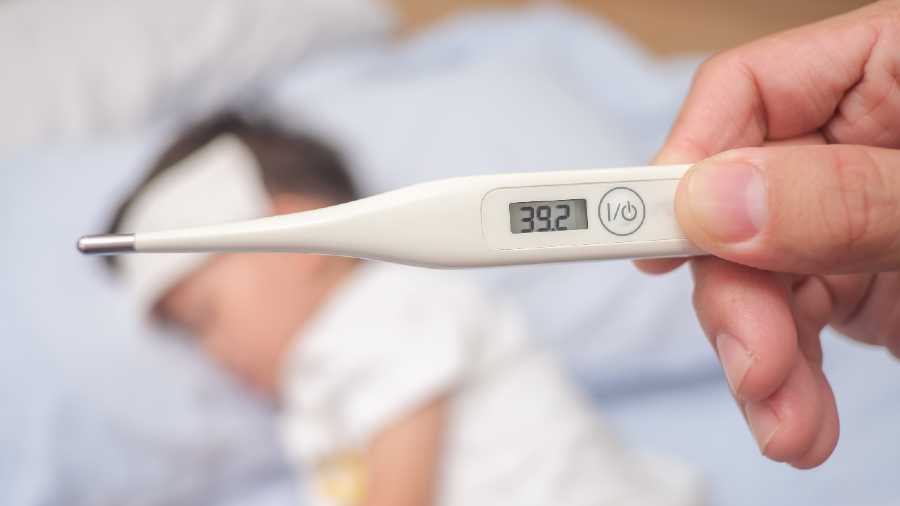Fever is a frightening symptom, especially today — on one side, there is the dreaded coronavirus lurking; on the other, there are infectious and parasitic diseases. It can also be part of the body’s response to cancerous tumours or autoimmune diseases.
“I feel hot”, “I am shivering”, “My child feels warm” are common complaints. These are subjective — fever is considered present only if the temperature is more than 100.4°F or 38°C.
Humans are born with an internal thermostat in the hypothalamic region of the brain, which receives signals from the nerves. If the body temperature rises, it activates the sweating mechanism to cool down the body. This can happen if the outside temperature is high or if there has been a great deal of physical activity. Conversely, if the outside temperature drops, the muscles shiver. This causes the internal temperature to rise. The body has normal temperature variations and a circadian rhythm, where the maximum is between 4pm and 8pm and the lowest is between 2am and 6am.
Fever can be reduced with antipyretic medication such as paracetamol. Dosage is 10-15 milligrams/kilogram/body weight repeated every 4-6 hours. In adults, 500mg is usually sufficient. Although aspirin is a good antipyretic, it is not safe for children under 10 as it can precipitate Reye's syndrome with liver and brain damage. Adequate fluid intake is important as dehydration itself can raise the temperature.
Parents become anxious when a child gets “frequent attacks”. A normal, healthy child with steady weight gain may have 6-8 “fevers” in the first two years of life. For it to be labelled recurrent, there should be three or more febrile (having or showing the symptoms of a fever) episodes in six months at least seven days apart. Examination and tests should reveal no obvious infective cause.
Viral infections are responsible for fever in 80 per cent of the cases, both in children and adults. This settles in three days. Some children develop seizures at the height of a fever. There are usually no neurological signs. There may be a family history of similar episodes. In such children, the slightest suspicion of fever warrants first-aid measures. The temperature should be reduced with tepid sponging and paracetamol in the appropriate dose before consulting the doctor.
Consult a doctor if:
• The infant is less than a month old;
• There is dehydration;
• The baby has seizures;
• There is inconsolable crying and irritability;
• The child is confused or delirious;
•The infant gets rashes;
• There is difficulty in breathing;
• The child pulls at the ear.
In adults, the sweating mechanism comes into play if they are covered during a fever. When the sweat evaporates from the body, the temperature drops. In children, the sweating mechanism is immature. Warm clothing and “bundling” can cause the temperature to rise dangerously.
Dress the child in light clothes. Wipe the unclothed body with a towel soaked in water at room temperature and allow the water to evaporate under a fan. Do not use warm water or soak the child in ice water. Record the date, time and temperature accurately before going to the doctor. Always carry the child’s immunisation record. Since many diseases are preventable in children with adequate and complete immunisation, this information helps speed up the diagnosis. Adults too need to be immunised against pneumonia, flu and Covid-19. One should maintain a file of tests done and medication to avoid ambiguity in diagnosis or treatment.
The writer is a paediatrician with a family practice at Vellore and the author of Staying Healthy in Modern India. If you have any questions on health issues, please write to yourhealthgm@yahoo.co.in












